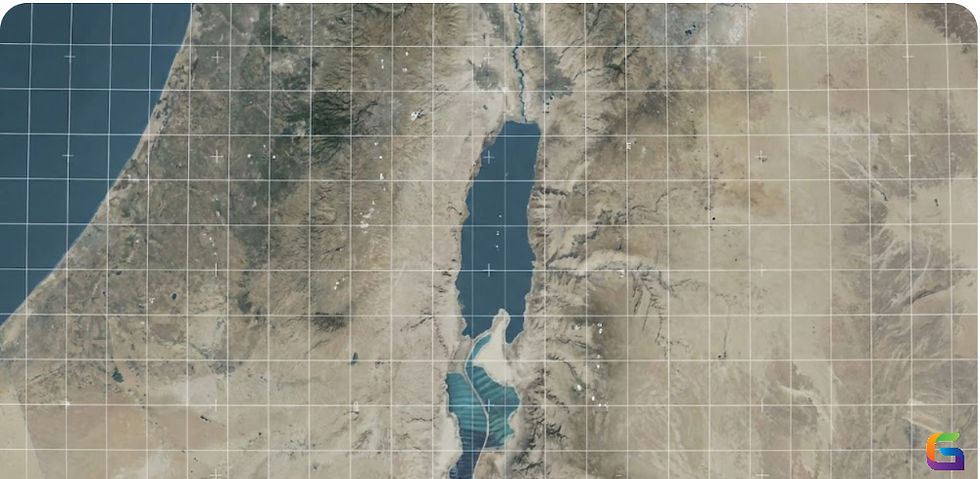Gaussian Splatting: Represent data points from a 3D space onto a 2D image.
- utkalsharma
- Sep 18, 2023
- 3 min read
Updated: May 27, 2024
Gaussian splatting is a technique used in computer graphics and computer vision for rendering or visualizing data points or particles in a 3D space onto a 2D screen or image. It is commonly used in point cloud rendering, imaging, and scientific visualization. The goal of Gaussian splatting is to produce a smooth and visually appealing representation of the data points by spreading their contributions to nearby pixels using Gaussian functions.
Here's how Gaussian splatting typically works:
Data Points: You start with a set of data points in 3D space. These points can represent various types of data, such as 3D points in a point cloud, particles in a fluid simulation, or data from a 3D scan.
Projection: Each data point is projected onto a 2D screen or image plane. This step involves converting the 3D coordinates of the data points into 2D screen coordinates, often using a perspective or orthographic projection matrix.
Splatting: For each projected data point, you create a Gaussian distribution or blob centered at its 2D screen position. The size and standard deviation of this Gaussian kernel can be adjusted based on your requirements and the desired visual effect. The Gaussian distribution models how the data point contributes to nearby pixels.
Accumulation: You accumulate the contributions of all the Gaussian kernels associated with the data points onto the 2D image plane. This involves adding or blending the values of the Gaussian kernels at each pixel location. The resulting image represents a smoothed representation of the original data points.
The key idea behind Gaussian splatting is that it produces a smooth and continuous representation of the data points, which can be visually more appealing and informative than simply plotting individual data points as pixels. It also helps in handling issues like aliasing, which can occur when data points are densely packed.
Gaussian splatting is commonly used in computer graphics for rendering point clouds, where it can create realistic and visually pleasing representations of complex 3D scenes. It is also used in various computer vision applications for visualizing and analyzing 3D data, such as medical imaging and 3D reconstructions. The parameters of the Gaussian kernels, such as their size and standard deviation, can be adjusted to control the level of smoothing and detail in the final image.
Gaussian Splatting v/s NeRF
Gaussian Splatting and NeRF are both techniques used in computer graphics and computer vision, but they serve different purposes and have distinct approaches. Here's a comparison of the two:
Gaussian Splatting:
Purpose: Gaussian splatting is primarily used for rendering and visualizing data points or particles in a 3D space onto a 2D screen or image. It is commonly used in point cloud rendering, scientific visualization, and medical imaging.
Concept: Gaussian splatting involves projecting data points onto a 2D plane and spreading their contributions to nearby pixels using Gaussian functions. It aims to create a smooth and continuous representation of the data.
Data Representation: It works well with sparse or irregularly spaced data points, such as those found in point clouds or particle simulations.
Complexity: Gaussian splatting is a relatively simple and well-established technique that doesn't require deep learning or neural networks.
Purpose: NeRF is primarily used for 3D scene reconstruction and novel view synthesis. It aims to model the 3D structure and appearance of a scene from 2D images.
Concept: NeRF uses a neural network to model the scene's 3D radiance field, which encodes both geometry (3D shape) and appearance (color) information. It estimates the radiance (color) and depth at any 3D point in the scene.
Data Representation: NeRF typically requires a set of 2D images of a scene taken from different viewpoints, and it learns to reconstruct the underlying 3D scene structure.
Complexity: NeRF is a more complex and recent approach that leverages deep learning and neural networks to capture intricate 3D scene details. It requires a substantial amount of training data and computational resources.
Gaussian splatting is a traditional technique for 2D projection and rendering of sparse 3D data points, while NeRF is a modern approach for 3D scene reconstruction and novel view synthesis using neural networks. The choice between them depends on the specific application and goals you have in computer graphics or computer vision tasks.
For more information, please feel free to reach us at:
Email: info@geowgs84.com
USA (HQ): (720) 702–4849
India: 98260-76466 - Pradeep Shrivastava
Canada: (519) 590 9999
Mexico: 55 5941 3755
UK & Spain: +44 12358 56710





Comments